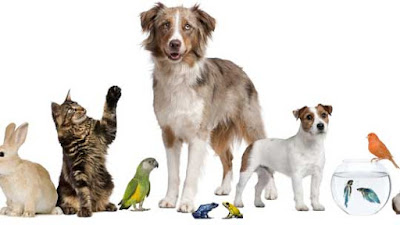A well-bred Rottweiler is calm and confident. He's typically aloof toward strangers, but never timid or fearful. Rottweilers exhibit a "wait-and-see" attitude when confronted with new people and situations. When these characteristics come together as they should, the Rottweiler is a natural guard dog with a mellow disposition who is successful not only in police, military, and customs work, but also as a family friend and protector.Rottweiler have a natural instinct to protect their families and can be ferocious in their defense. It's essential to channel their power and protectiveness by providing early socialization, firm, fair, consistent training and leadership, and a regular job to perform. When this doesn't happen, rottweiler can become dangerous bullies rather than the companionable guardians they're meant to be.
Rottweilers walk a fine line between protectiveness and aggressiveness. If they aren't carefully bred for a calm, intelligent temperament and properly socialized and trained, they can become overly protective. That might sound like what you want, but a Rottie who lacks the ability to discriminate is dangerous to everyone he encounters, not just the bad guys.
You must be able to provide your Rottweiler with leadership he can trust and respect without resorting to anger or physical force. Otherwise, he'll take the role of top dog for himself. With a dog as powerful and intelligent as the Rottweiler, this is a recipe for disaster.
Despite what you might have heard, Rottweilers are not temperamentally unsound or inherently vicious. Well-bred, well-socialized Rotties are playful, gentle, and loving to their families. They are easy to train if treated with respect and make great companions.
As wonderful as Rottweilers can be, they aren't the dog for everyone. You must not only be dedicated to training and socializing your Rottie, you must also deal with people who don't understand the breed and pre-judge it. Because of bad or tragic experiences with Rottweilers or other large breeds, some cities have banned the breed. It's unfair to judge an entire breed by the actions of a few, but it's a reality you will have to deal with if you own a Rottweiler.
You can do your part to redeem the reputation of the breed by training your Rottweiler to obey and respect people. Most important, don't put your Rottie in the backyard and forget about him. This is a dog who is loyal to his people and wants to be with them. If you give him the guidance and structure he needs, you'll be rewarded with one of the finest companions in the world.
The Official Temperament
The ADRK (Allegmeiner Deutscher Rottweiler Klub) is the German governing organization for the Rottweiler breed.
It's also responsible for setting, maintaining, and updating/revising the Breed Standard at an international level.
This is the organization that 'gave birth' to the Rottweiler breed and is the ultimate authority when it comes to the integrity of the breed.
The #ADRK Breed Standard describes Rottweiler behavior and temperament like this....
'... good natured, placid in basic disposition and fond of children. Very devoted, obedient, biddable and eager to work... self assured, steady and fearless....'
Here in the USA, the #AKC (American Kennel Club) Breed Standard characterizes the correct Rottweiler temperament in this way.....
'Calm, confident and courageous, with a self-assured aloofness... an intelligent dog of extreme hardness and adaptability, with a strong willingness to work...'
These descriptions give you a good idea of what to expect from an adult Rottweiler who is well-bred and has been raised correctly.
It's important to know that Rottweiler behavior should never include indiscriminate aggression, or appear vicious, 'sharp', fearful or nervous (skittish).
Unfortunately poorly-bred, poorly-socialized and improperly raised Rottweilers (and there are a LOT of them), may carry these personality traits. Be aware of this and choose your puppy or dog carefully. If you're purchasing your Rottie, only buy from responsible and reputable breeders.
It's also responsible for setting, maintaining, and updating/revising the Breed Standard at an international level.
This is the organization that 'gave birth' to the Rottweiler breed and is the ultimate authority when it comes to the integrity of the breed.
The #ADRK Breed Standard describes Rottweiler behavior and temperament like this....
'... good natured, placid in basic disposition and fond of children. Very devoted, obedient, biddable and eager to work... self assured, steady and fearless....'
Here in the USA, the #AKC (American Kennel Club) Breed Standard characterizes the correct Rottweiler temperament in this way.....
'Calm, confident and courageous, with a self-assured aloofness... an intelligent dog of extreme hardness and adaptability, with a strong willingness to work...'
These descriptions give you a good idea of what to expect from an adult Rottweiler who is well-bred and has been raised correctly.
It's important to know that Rottweiler behavior should never include indiscriminate aggression, or appear vicious, 'sharp', fearful or nervous (skittish).
Unfortunately poorly-bred, poorly-socialized and improperly raised Rottweilers (and there are a LOT of them), may carry these personality traits. Be aware of this and choose your puppy or dog carefully. If you're purchasing your Rottie, only buy from responsible and reputable breeders.

















